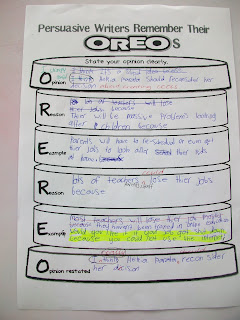This week we have started to look at the different features of persuasive writing. As you can see, there are lots of different features for us to learn about:
Each lesson we are hoping to look at one of these features, although if we need to spend more time on some of them we will. Likewise, if the group feel confident that they already understand a feature, we will move through it must faster. This is a great example of why student voice in our classrooms is so important!
On Tuesday we looked at
Rhetorical Questions. We learnt that these are questions that make the
audience think. You will not get an answer, but they challenge the reader, entice them, make them think, feel guilty or examine their conscience.
There are 3 types of rhetorical questions:
Challenge questions - These questions encourage the audience to take a stand - Are you enough of a man?
Guilt inducing questions - These questions are written to make the reader feel bad - Can you watch this poor child suffer?
Enticing questions - These questions are designed to tempt you into something, to make you want it. How can you refuse?
In order to earn a second OREO the students needed to add at least one rhetorical question to their piece of writing and highlight it. You can see these at the bottom of this post. Remember, you can make any picture bigger by clicking on it.
On Wednesday we looked at persuasive words and phrases. We brainstormed a list of the different ways we could share our opinions:
The students then needed to go back to their writing and circle the persuasive words and phrases they had used. Some students decided they could replace some of the words they had written with more interesting ones, which was great! They also were pleased to see this chart go up on the wall as a reference for them to use.
We also learnt about modal verbs. This is a helping verb that is used to express a persons ability, permission or obligation to do something.
The most common ones are:
- Can/could/be able to
- May/might
- Shall/should
- Must/have to
- Will/would
I didn't share this list with the student, but instead asked them to brainstorm all of the words that could follow the word You in a piece of persuasive writing. They did a fantastic job to come up with this list:
On Thursday we looked at 3-point lists. This is a technique often used in persuasive writing where the author uses lists of three. They seem to have a special rhythm that sticks in the mind and gets the message across. We had great fun playing a simple game that required the students to give 3-point lists:
Tomorrow we will be all about making it personal - Getting the reader involved by using words like you or making them feel part of something by saying we. We will also start filling in our Persuasive Language Features Charts, and transferring our persuasive piece of writing onto a device - We are running out of room on our pieces of paper!


































